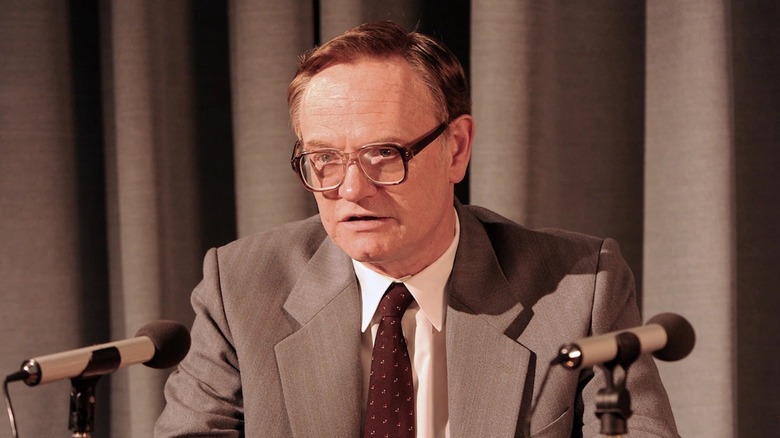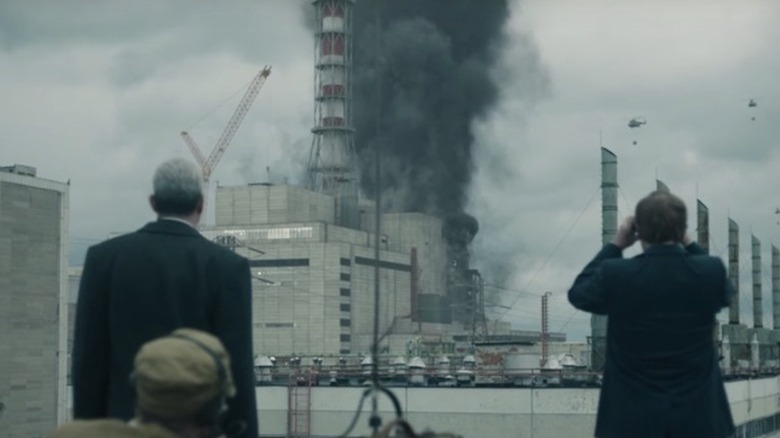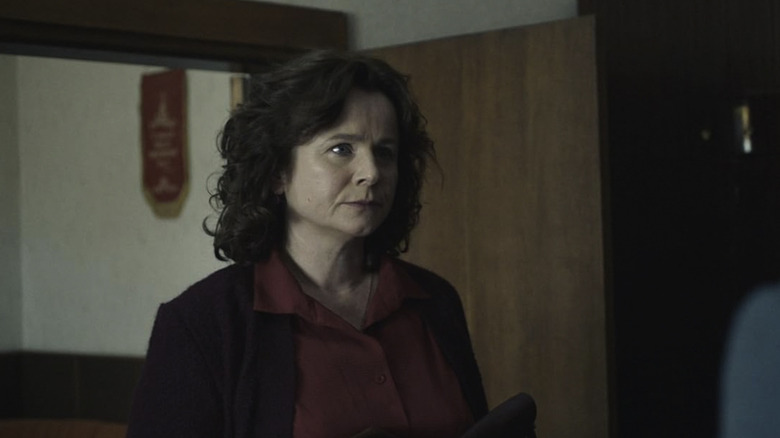How Accurate Is HBO's Chernobyl Miniseries?
It's easy to say (and we at /Film certainly did at the time) that "Chernobyl" was 2019's most vital, terrifying, and relevant horror story. Based on the true story of the 1986 Chernobyl nuclear plant accident and its aftermath, HBO's captivating and intense miniseries depicted the disaster in grim and visceral detail that, at times, almost seemed like a documentary about an impossibly horrific event.
Of course, it's worth noting that very few people actually have any sort of personal reference point to nuclear disasters, so a viewer who doesn't know the details of the real-life Chernobyl accident might find it difficult to determine whether the show's realism was unflinching dedication to depict the events in a historically accurate fashion, or if it was simply Hollywood magic at its most captivating. After all, "Chernobyl" creator Craig Mazin has since gone on to make "The Last of Us," which can often be just as visceral but is obviously based on a video game series. With that in mind, let's take a look at just how realistic HBO's "Chernobyl" truly is.
Chernobyl got many things horribly, horribly right
"Chernobyl" creator Craig Mazin knew the science of the show was very important, and as such, the show aimed to make things as accurate as its historical drama miniseries medium permits. This isn't exactly hard when you consider how shocking many parts of the real story it's based on were. Adam Higginbotham, author of "Midnight in Chernobyl," told CBS News that the dramatic scene of liquidator workers who have to remove radioactive debris from the power plant's roof in episode 4, "The Happiness of All Mankind," could basically pass off as a documentary:
"They were timed for the amount of time they could be out there, in seconds, to limit their exposure to what at the time was regarded as safe as it could be."
The dedication to making the show as accurate as possible wasn't limited to the things that happened around the titular nuclear power plant, either. "Chernobyl" painstakingly brings the particular look of the mid-1980s Soviet Union to life, to the point that places, clothes, and objects are almost invariably extremely accurate. Likewise, several key scenes that depict the way the Soviet system operated are notably faithful to reality. Episode 1, "1:23:45," captures the core of Soviet bureaucracy in the post-accident (in)actions of town leader Zharkov (Donald Sumpter), who decides to quarantine the city and keep the residents in despite the risks it poses to them. Similarly, the Central Committee hearing in episode 5, "Vichnaya Pamyat," accurately shows the way trials worked at the time. What's more, people with first-hand experience about the disaster have praised the way "Chernobyl" captured the general atmosphere and people's reactions across the board.
Chernobyl's inaccuracies lie in the way its characters and the Soviet society are portrayed
Of course, "Chernobyl" also took creative liberties. For instance, heroic volunteer trio Alexei Ananenko (Baltasar Breki Samper), Valeri Bezpalov (Philip Barantini), and Boris Baranov (Oscar Giese) weren't the first men to enter the water-filled basement of the power plant in the event depicted in episode 2, "Please Remain Calm," and they weren't applauded or rewarded after they completed their dangerous mission.
However, the biggest discrepancies between real life and "Chernobyl" are in the way the show depicts people. The miniseries liberally suggests that the authorities will have people shot at the slightest possibility of disobedience, which wasn't really something the Mikhail Gorbachev-era Soviet Union did — rather, it was more of a pre-WWII fixture of Soviet life, and at this point most people were simply resigned to do what they were told with no need for excess threats.
The show's scientists, Valery Legasov (Jared Harris) and Ulana Khomoyuk (Emily Watson), are also fairly inaccurate. The show is pretty open about Khomoyuk being a fictional character who represents an amalgamation of the many investigators of the Chernobyl incident, but even without taking that into account, both she and Legasov are far too confrontational and liable to call out higher-ups on their quest to uncover the truths behind the incident to have any place of influence within the Soviet system. In reality, the Soviet system didn't really have the sort of Western-style individual heroes and villains "Chernobyl" often focuses on, and it was widely known that Chernobyl power plant was dangerous well before the disaster. As Adam Higginbotham put it in the CBS News interview:
"In reality, so many nuclear scientists knew all along that there were problems with this reactor — the problems that led ultimately to an explosion and disaster."


